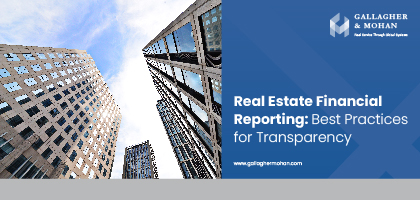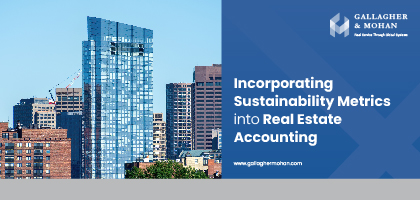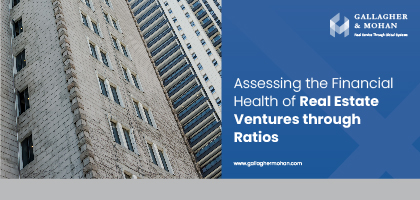11 March 2024
Top 10 Cutting-Edge Techniques for Real Estate Investment Analysis: A Strategic Guide
Real estate investment stands as a promising avenue for financial growth, yet the road to success demands more than just a cursory understanding. It requires a nuanced and sophisticated approach to analysis that can unravel the complexities inherent in the market. This guide serves as a beacon for both seasoned investors seeking to refine their strategies and newcomers eager to delve into the realm of real estate with confidence.
As the real estate landscape continues to evolve, staying ahead necessitates a comprehensive grasp of advanced techniques. Beyond the fundamentals, these strategies are designed to empower investors to make astute decisions, mitigate risks, and unlock the full potential of their investments.
Whether you're well-versed in the language of real estate or just beginning to explore its nuances, the following insights are tailored to elevate your investment game. Join us on a journey through the intricacies of real estate analysis, where we not only delve into the fundamental principles but also unveil advanced methodologies that can set you on a path to financial prosperity.
Understanding the Fundamentals
Before delving into cutting-edge methods, a solid grasp of fundamental principles is essential. Let's revisit the key elements that form the foundation of real estate investment analysis:
Location Analysis: The Crux of Real Estate Success
The location significantly influences a property's investment potential. Proximity to services, transit options, educational institutions, and employment opportunities all impact property values. Thorough research, considering current market trends, is crucial for identifying profitable investment opportunities.
Analyzing Financial Data: Unveiling the Numbers
Examining financial implications is critical in real estate investment. Key parameters such as return on investment (ROI), cash flow, cap rate, and net operating income (NOI) provide vital insights into a property's long-term viability and profitability.
Market Research: Deciphering Supply and Demand Dynamics
Understanding supply and demand dynamics is vital for making informed investment decisions. Analyze recent trends, vacancy rates, rental yields, and growth expectations to identify markets with strong demand and minimal saturation.
Risk Assessment: Mitigating Potential Pitfalls
Real estate investment carries inherent risks. Effective risk management involves evaluating market turbulence, governmental reforms, economic conditions, and property-specific dangers. Diversification and contingency planning are essential for protecting your capital.
Top 10 Advanced Techniques for Real Estate Investment Analysis
Building on the fundamentals, let's explore more sophisticated strategies to enhance your real estate investment analysis:
1. Predictive Analytics Prowess: Anticipating Future Trends
In the era of data-driven decision-making, predictive analytics stands out as a beacon for real estate investors seeking to anticipate and ride the waves of future trends. This advanced technique involves harnessing the power of historical data and statistical models to forecast the trajectory of the real estate market.
Delving into factors such as population growth, labor market conditions, and infrastructure advancements, predictive analytics unveils insights that transcend the present moment. By deciphering the patterns of the past, investors gain a strategic advantage in identifying emerging investment opportunities before they fully materialize. This forward-thinking approach positions investors at the forefront of market shifts, allowing them to capitalize on trends that are yet to reach their zenith.
In essence, predictive analytics transforms the real estate investment landscape into a canvas where investors can paint their success by staying one step ahead of the market's natural evolution.
2. Economic Indicators Enlightenment: Navigating Macro- and Microeconomic Analysis
In the intricate tapestry of real estate investment, adept investors wield the power of economic indicators—both macro and micro—to navigate the nuances of market trends. This advanced technique involves a dual-pronged approach, dissecting local market conditions and zooming out to evaluate broader economic variables.
At the microeconomic level, a discerning eye scrutinizes local market conditions and the growth potential of neighborhoods. This granular analysis unveils the subtleties that can often be overlooked, providing insights into the heartbeat of specific communities.
Simultaneously, macroeconomic indicators such as interest rates, GDP growth, and inflation form the broader strokes on the canvas of economic analysis. By understanding these overarching trends, investors gain a comprehensive view of the economic landscape, empowering them to make data-driven decisions that transcend the immediate surroundings.
The synergy between macro- and microeconomic analysis transforms real estate investment into a symphony where investors conduct the orchestra of their portfolios with precision and foresight.
3. Comparative Market Analysis (CMA) Mastery: Deciphering Property Worth
In the art of real estate investment, the Comparative Market Analysis (CMA) emerges as a masterstroke, allowing investors to paint a vivid picture of a property's worth and profit potential. This advanced technique involves a meticulous examination of comparable properties, establishing a gold standard for evaluating investment prospects and securing advantageous deals.
By assessing properties similar in features and location that have recently sold or rented, investors gain valuable insights into the prevailing market conditions. The CMA process involves dissecting these comparables—considering their features, sale prices, and rental values—to derive a comprehensive understanding of the fair market value of the property under consideration.
This method not only acts as a barometer for assessing worth but also empowers investors with a strategic advantage in negotiations. Armed with the insights garnered from a well-executed CMA, investors can confidently navigate the negotiation table, ensuring that every deal struck aligns with their financial objectives and maximizes profit potential. In essence, CMA mastery transforms real estate investment into a precision art, where each stroke contributes to a masterpiece portfolio.
4. Data Dexterity: Leveraging Additional Data Sources
In the age of information, real estate investors seeking a competitive edge delve into the art of data dexterity. This involves not just relying on traditional sources but tapping into a rich tapestry of additional data sources—from online platforms to social media, real estate market websites, and specialized software.
Online platforms become treasure troves of market trends, providing real-time data on property performance and investor sentiment. Social media, with its pulse on community chatter, unveils qualitative insights into neighborhood dynamics and emerging opportunities. Real estate market websites offer a panoramic view of trends and transactions, acting as digital compasses in the investment landscape.
Moreover, specialist software equipped with analytical tools propels investors into the realm of predictive insights. By amalgamating data from diverse sources, investors can gain a holistic understanding of market dynamics, enabling them to make well-informed decisions that go beyond conventional wisdom.
In essence, the art of leveraging additional data sources transforms real estate investment into a dynamic science, where investors harness the power of information to sculpt resilient portfolios and navigate the ever-evolving terrain with precision.
5. Data Alchemy: Unleashing Machine Learning and Artificial Intelligence
In the era of data alchemy, real estate investors are unlocking the transformative potential of machine learning and artificial intelligence (AI). This advanced technique involves harnessing the unparalleled data processing power of AI to navigate the labyrinth of information, spot trends, and make decisions that transcend conventional analysis.
AI-driven algorithms, the wizards of this digital realm, hold the key to evaluating property valuations with unprecedented accuracy. By sifting through vast volumes of data, these algorithms uncover hidden patterns, analyze market trends, and unveil investment options with superior potential returns. The predictive prowess of machine learning allows investors to gaze into the crystal ball of the market, positioning themselves ahead of the curve.
In essence, the infusion of machine learning and AI into real estate investment transforms it into a realm of data-driven precision. Investors become maestros, orchestrating portfolios with a symphony of algorithms that harmonize market dynamics and investment potential, propelling them towards greater success in an increasingly competitive landscape.
6. Financial Fortitude: Mastering Cash Flow Sensitivity Analysis
In the strategic arsenal of real estate investment, the mastery of cash flow sensitivity analysis stands out as a shield against financial uncertainties. This advanced technique involves a comprehensive examination of how variations in factors—such as rent, vacancy rates, interest rates, and unforeseen costs—can sway the financial success of a real estate investment.
By modeling various scenarios and analyzing their effects on cash flow, investors gain a profound understanding of how changes in economic currents can impact their investments. This foresight not only aids in making informed decisions but also serves as the cornerstone for creating robust backup plans. In the dynamic landscape of real estate, where variables are subject to flux, the ability to anticipate and adapt becomes a strategic advantage.
Cash flow sensitivity analysis transforms real estate investment into a financial chess game, where investors navigate the board with foresight, predicting moves and ensuring the resilience of their portfolios against unforeseen challenges. In essence, it is the art of financial fortitude in the face of a dynamic and ever-changing market.
Also Read: The Pros and Cons of Leveraging in Real Estate Investments
7. Technological Triumph: Streamlining Analysis with Real Estate Investment Software
In the age of technological triumph, real estate investors are embracing advanced tools and unleashing the power of real estate investment software. This sophisticated technique involves leveraging cutting-edge solutions equipped with financial modeling templates, risk assessment modules, and market trend trackers to streamline analysis, save time, and elevate one's position in the market.
These digital companions become the trusted allies of investors, offering not just efficiency but also accuracy in financial modeling. Financial templates provide a structured framework for analysis, risk assessment modules act as vigilant guardians against potential pitfalls, and market trend trackers serve as digital compasses navigating the tumultuous seas of real estate dynamics.
The integration of real estate investment software transforms analysis into a seamless process, allowing investors to focus on strategic decision-making rather than drowning in a sea of data. In essence, it is a technological triumph that empowers investors to ride the waves of the real estate market with precision and confidence.
8. Ethical Investing: Integrating ESG Considerations for Sustainable Impact
In the evolving landscape of real estate investment, ethical considerations take center stage with the integration of Environmental, Social, and Governance (ESG) factors. This advanced technique involves incorporating sustainability and socially responsible practices into your investment analysis, transcending mere financial metrics.
As investors evolve into stewards of positive change, variables such as energy efficiency, carbon footprint, community impact, and ethical business practices become integral components of the decision-making process. By aligning investments with ESG principles, investors not only contribute to positive societal and environmental impacts but also position themselves strategically in a market increasingly valuing ethical practices.
In essence, the integration of ESG considerations transforms real estate investment from a purely financial endeavor into a force for positive change. It represents a conscious choice to contribute to a sustainable and ethical future while reaping the potential benefits of investments that stand the test of time.
9. Diversification Dynamics: Exploring Real Estate Investment Trusts (REITs)
In the pursuit of a diversified investment portfolio, real estate investors are increasingly turning to the versatile realm of Real Estate Investment Trusts (REITs). This advanced technique involves exploring REITs as an alternative vehicle for engaging in the real estate industry, offering a unique avenue for diversification.
REITs, as financial instruments, provide investors with the opportunity to access a broad spectrum of real estate assets, ranging from residential and commercial properties to infrastructure projects. To navigate this alternative landscape effectively, investors conduct a thorough analysis of REITs' financial performance, portfolio structure, management experience, and market standing.
In essence, exploring REITs adds a layer of dynamism to a real estate investment strategy. It allows investors to diversify across different sectors and geographic locations without the burden of direct property ownership, enhancing the resilience and adaptability of their investment portfolios in the face of market fluctuations.
10. Diligent Mastery: Thorough Due Diligence and Property Inspection
In the realm of real estate investment, the journey to success culminates in the meticulous art of due diligence and property inspection. This advanced technique is the final checkpoint before finalizing any investment, demanding a comprehensive understanding of the property's condition, potential liabilities, and legal responsibilities.
The due diligence process involves engaging a team of seasoned professionals, including real estate brokers, property inspectors, and legal experts. These professionals act as guardians of the investment, conducting thorough property inspections, scrutinizing title deeds, and ensuring legal compliance. Through their expertise, investors gain a nuanced understanding of the property's physical state, any potential risks, and the legal intricacies associated with the investment.
In essence, due diligence and property inspection form the bedrock of a secure and informed investment. It's a meticulous mastery that ensures investors step into their real estate ventures with their eyes wide open, ready to navigate the intricacies of property ownership with confidence and foresight.
Conclusion
In the ever-evolving landscape of real estate investment, mastering cutting-edge methods serves as the compass for investors seeking a competitive edge. This journey involves a harmonious blend of understanding fundamentals, harnessing technology, exploring alternative data sources, and adopting modern analytical techniques. Through this holistic approach, investors can not only make well-informed decisions but also navigate the complexities of the dynamic market with finesse.
Fundamentals lay the groundwork for success, providing investors with a solid understanding of the principles that govern real estate investment. However, it is the integration of technology that propels investors into the future, enabling them to process vast amounts of data, spot trends, and make decisions grounded in foresight.
The exploration of alternative data sources adds a layer of depth to analysis, empowering investors to glean insights beyond conventional metrics. This adaptability and willingness to explore diverse sources contribute to a well-rounded investment strategy.
The adoption of modern analytical techniques, from predictive analytics to machine learning, elevates real estate investment to a science. Investors become data scientists, navigating through intricate patterns to uncover opportunities and optimize returns.
As the journey unfolds, the importance of comprehensive research remains paramount. Adapting to market developments and considering sustainability aspects becomes not just a strategic choice but a moral imperative. In a world where success is measured not just in financial gains but in positive contributions to society and the environment, responsible and informed real estate investment becomes a beacon for future success.
Embarking on a successful real estate investment journey is not merely about transactions; it is about creating a legacy. It is about building resilient portfolios that stand the test of time, weathering market fluctuations with grace. It is about being not just investors but stewards of change, contributing to a sustainable and prosperous future.
In conclusion, the mastery of real estate investment analysis is a dynamic journey—one that requires continuous learning, adaptability, and a commitment to ethical and sustainable practices. With the right blend of knowledge, technology, and foresight, investors can confidently navigate the twists and turns of the real estate market, ensuring not only financial success but a legacy of informed and responsible investment.



